Between Dust, Fury, and Redemption | REVIEW [ENG-ESP]
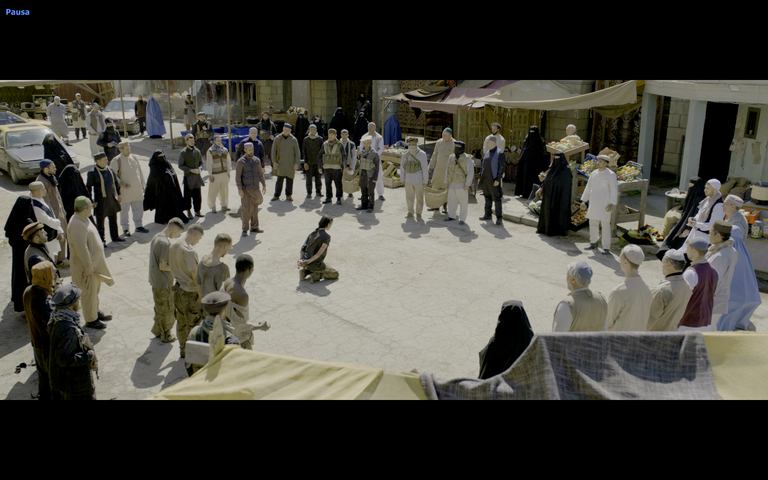
...The Desert Angels are not celestial beings, but humans who, amidst the dust and violence, choose to care, protect, and resist...
Warm greetings, film lovers!
Back together again in this warm community. This time, I propose a conversation about an action-thriller film.
These are times when war has become a landscape, and this film I'm proposing to you today, Desert Angels, is like a cry among the ruins. Directed by Martin Campbell, it falls into the war genre, but subverts it from a feminine, visceral, and deeply political perspective.
Set in Afghanistan during the US withdrawal, the film plunges us into a clandestine mission. One led by women. The objective: to rescue teenage girls kidnapped by the Taliban regime.
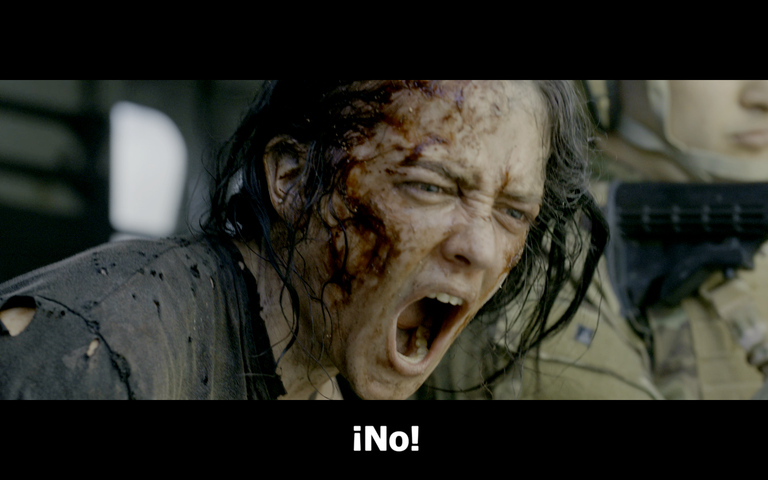
But the story goes beyond the plot. At its heart beats a constant tension. That between duty and humanity, between the camouflage we use to survive and the truth that defines us.
It's a film that doesn't leave you indifferent, that hits you with uncomfortable questions and stays with you long after it's over.
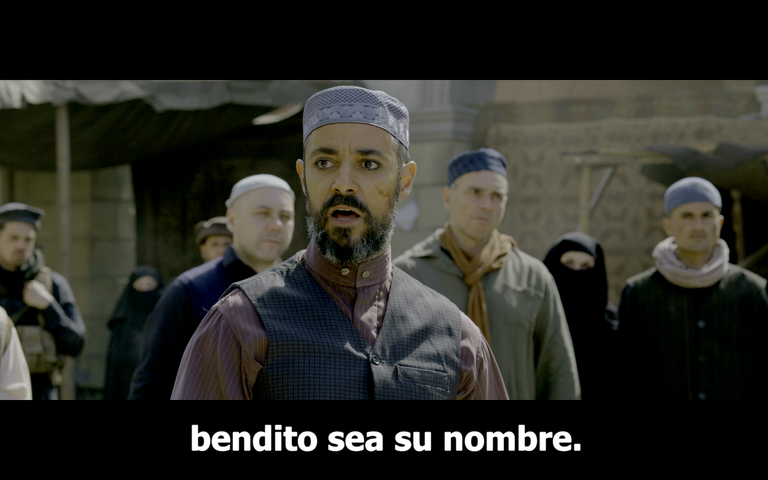
Jake (Eva Green), an elite soldier, along with a group of female soldiers, infiltrates enemy territory under the guise of a humanitarian organization. What begins as a tactical operation becomes an emotional journey, where each step reveals invisible wounds, internal betrayals, and ethical dilemmas that transcend the battlefield.
Jake is not a conventional heroine. Her gaze is hard, but not cold; Her leadership, firm but not infallible. Eva Green embodies this woman with a mix of restraint and fury reminiscent of the protagonists of Zero Dark Thirty or Zero Dark Thirty, but with a more intimate emotional charge.
At her side, we find characters like Zara (Ruby Rose), an expert in explosives and sarcasm, and Leila (Maria Bakalova), an Afghan doctor who serves as a bridge between cultures. Each represents a facet of the conflict: technique, empathy, rage, memory.
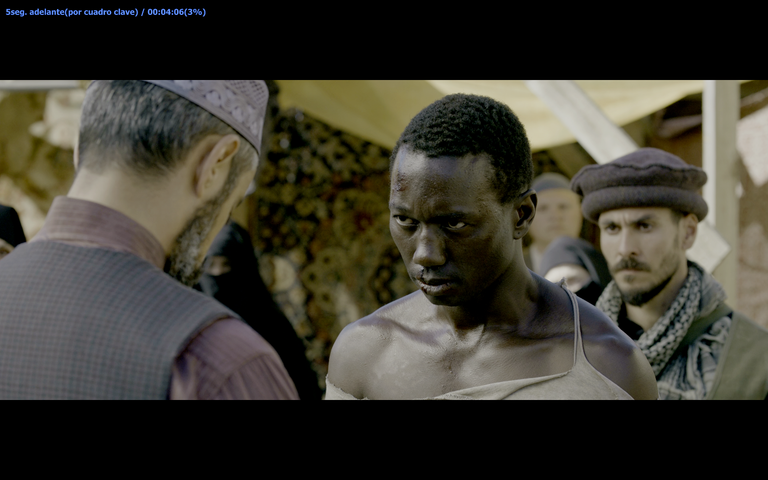
What's most notable is how the film avoids falling into stereotypes. There's no glorification of violence or simplification of the enemy. The Taliban are not caricatures, but complex, feared, and human figures. The kidnapped teenagers are victims, and they are voices that resist, that narrate, that remember. In this sense, Desert Angels becomes an ensemble work.
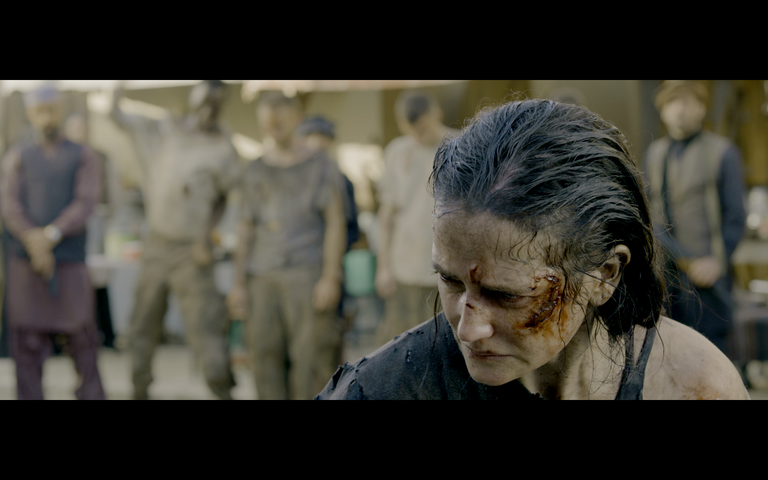
Desert Angels was produced on location in Morocco and Jordan, accurately recreating Afghan landscapes without resorting to excessive digital gimmicks. Director Martin Campbell, known for his work on Casino Royale and The Foreigner, moves away from the glamour of his previous films to embrace a more documentary, grittier, and more real aesthetic.
The production design, by Paul Kirby, creates a setting filled with dust, sweat, and tension. The devastated villages, the makeshift camps, the tunnels that plunge into darkness... Each setting is crafted with a detail that drowns you. It makes you feel the dust, the cold, the oppressive weight of that world.
Dion Beebe's camerawork doesn't sugarcoat anything. It plays with earthy ochres and brutal chiaroscuros. It's not just an image; it's a physical sensation of desolation and the fact that time is running out.
There are shots that seem taken from war reports, and others that linger on faces, on gestures, on silences that speak louder than a thousand explosions. And I like that!
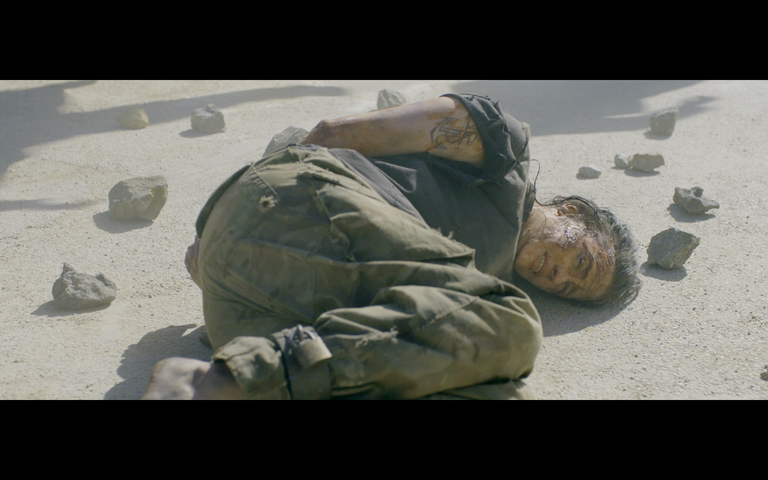
The music, written by Harry Gregson-Williams, avoids easy drama. This film doesn't go for the dramatic punchline. Instead of hammering you with the action, it stays with you in the raw moments: in the introspection, in the breathtaking loss, in the gnawing doubts.
There are moments when the sound completely fades away. Suddenly, only a dense, heavy silence remains. A void that pervades everything and becomes, perhaps, the most eloquent character of all. It is in this silence that the film grips you most strongly.
It is in these moments that the film achieves its greatest poetic power.
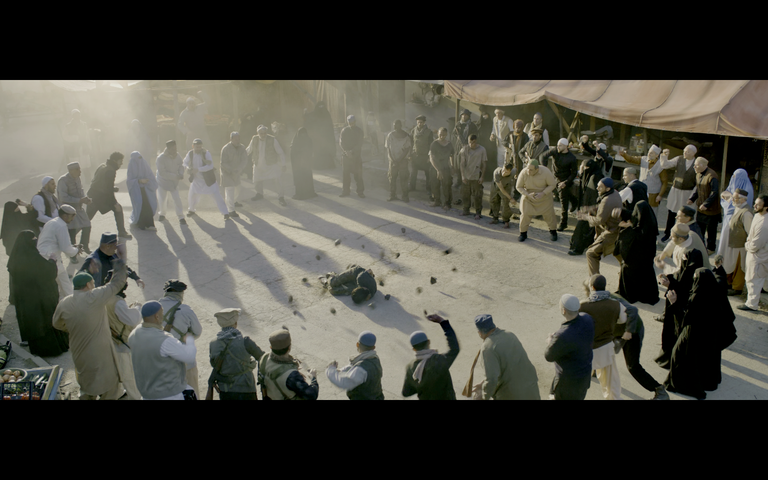
Unlike other films in the genre, Desert Angels doesn't rely on special effects to impress. The explosions, shootouts, and hand-to-hand combat are choreographed with realism and restraint. The practical effects team, led by Chris Corbould, achieves a verisimilitude that avoids excess. There are no unnecessary slow motions or cameras that revolve around the hero. Here, the violence is swift and painful.
Particularly noteworthy is a nighttime sequence in which the group of women must cross a minefield under enemy fire. The tension is built not only with visual effects, but with the editing, sound, and acting. Every step is a possibility of death, and the viewer feels it, suffers it.
Absolutely. The drones, the helicopters, the landscapes... the digital world is there, but it doesn't command. It's just the setting.
The film beats elsewhere: in the physical. In what can be touched. In the splashing mud, in the cold metal of the weapon, in the sweat and fear that feel real. It's there, in the tangible, where everything truly plays out. Where danger takes shape.
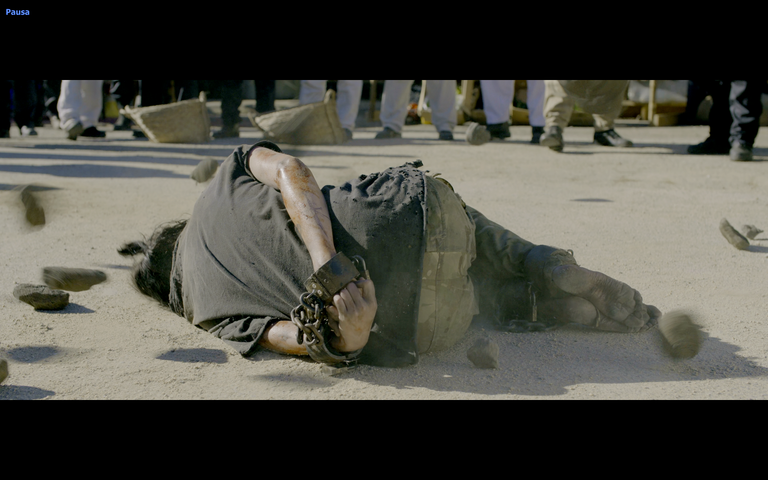
Desert Angels has been rated R (Restricted) for its violent content, strong language, and sensitive themes. And for good reason. It's not a film meant to entertain. It's not meant to entertain; it's meant to stir up emotions, to raise uncomfortable questions that don't have clear answers in any textbook.
And its true "warning" isn't the explicit violence, but the intellectual challenge it poses: it demands an adult perspective. It forces you not to be a passive spectator, but to question everything.
What truly defines heroism when all the options are terrible?
What is the real cost of intervening... or not?
Where is humanity left in the midst of horror?
In the end, you don't emerge unscathed. The most crucial question lingers in your mind: what would I have done?
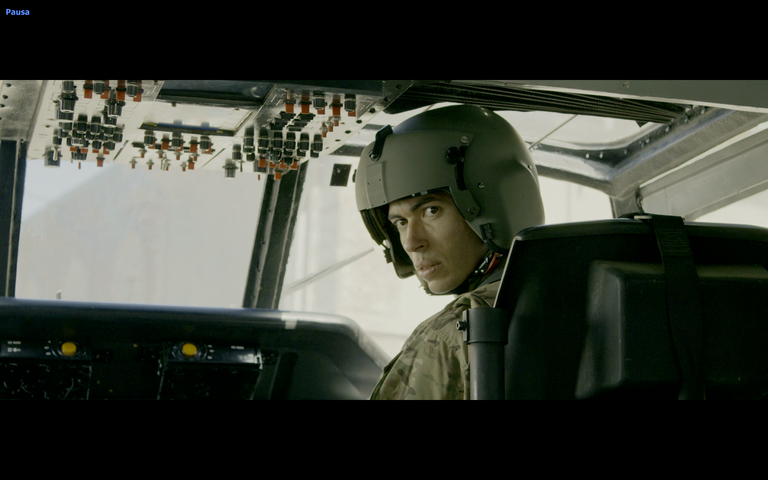
Interestingly, the title Desert Angels also refers to real organizations searching for lost migrants in the Arizona desert. Although the film doesn't directly address this theme, the parallel is unavoidable. In both cases, they are women and men who risk their lives to save others, who operate in silence, who challenge unjust systems.
This connection between fiction and reality gives the film a powerful symbolic dimension. The desert angels are not celestial beings, but human beings who, amidst the dust and violence, choose to care, protect, and resist.
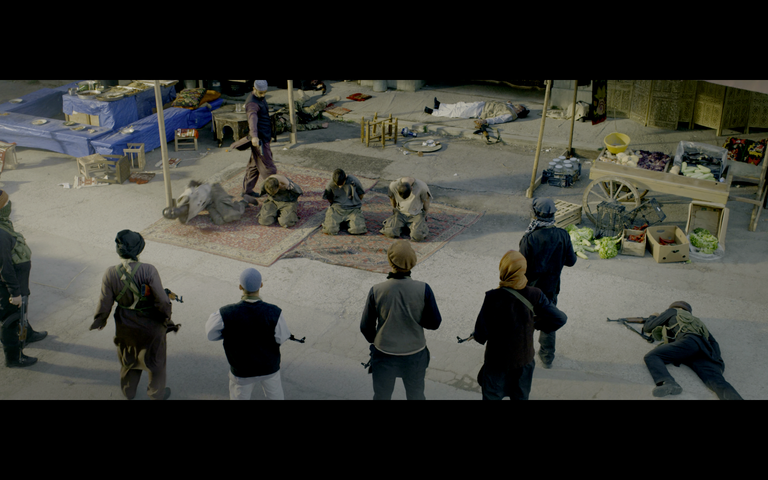
Desert Angels isn't perfect. There are moments where the pace slumps, where some subplots feel rushed. But its strength lies in what it leaves behind: a sense of urgency, of discomfort, of admiration for those who fight without applause.
It's a film that fits into the tradition of war films, but also challenges it. That shows war, but doesn't celebrate it. That portrays strong women, but doesn't idealize them. That speaks of rescue, but also of loss. In the most arid landscapes, there are voices that resist. And those voices deserve to be told.
en español

🎞️ Entre el polvo, la furia y la redención|RESEÑA
...Los ángeles del desierto no son seres celestiales, sino humanos que, en medio del polvo y la violencia, eligen cuidar, proteger, resistir...
¡Saludos cordiales amantes del cine!
Nuevamente juntos en esta cálida comunidad. En esta ocasión les propongo conversar sobre una película de acción y suspenso.
Son tiempos donde la guerra se ha vuelto paisaje, y está película que les propongo hoy, Ángeles del Desierto, es como un grito entre ruinas. Dirigida por Martin Campbell, se inscribe en el género bélico, pero lo subvierte desde una mirada femenina, visceral y profundamente política.
Ambientada en el Afganistán de la retirada estadounidense, la película nos mete de lleno en una misión clandestina. Una liderada por mujeres. El objetivo: rescatar a adolescentes secuestradas por el régimen talibán.

Pero la historia va más allá de la trama. En su corazón late una tensión constante. La que hay entre el deber y la humanidad, entre el camuflaje que usamos para sobrevivir y la verdad que nos define.
Es una película que no te deja indiferente, que te golpea con preguntas incómodas y se queda contigo mucho después de que acabe.

Jake (Eva Green), una soldado de élite, junto a un grupo de mujeres militares, se infiltra en territorio enemigo bajo la fachada de una organización humanitaria. Lo que comienza como una operación táctica se convierte en una travesía emocional, donde cada paso revela heridas invisibles, traiciones internas y dilemas éticos que trascienden el campo de batalla.
Jake no es una heroína convencional. Su mirada es dura, pero no fría; su liderazgo, firme pero no infalible. Eva Green encarna a esta mujer con una mezcla de contención y furia que recuerda a las protagonistas de Zero Dark Thirty o La noche más oscura, pero con una carga emocional más íntima.
A su lado, encontramos a personajes como Zara (Ruby Rose), experta en explosivos y sarcasmo, y Leila (Maria Bakalova), médica afgana que sirve de puente entre culturas. Cada una de representa una faceta del conflicto: la técnica, la empatía, la rabia, la memoria.

Lo más notable es cómo la película evita caer en estereotipos. No hay glorificación de la violencia ni simplificación del enemigo. Los talibanes no son caricaturas, sino figuras complejas, temidas y humanas. Las adolescentes secuestradas son víctimas, y son, voces que resisten, que narran, que recuerdan. En este sentido, Ángeles del Desierto se convierte en una obra coral.

La producción de Ángeles del Desierto se llevó a cabo en locaciones de Marruecos y Jordania, recreando con precisión paisajes afganos sin recurrir a artificios digitales excesivos. El director Martin Campbell, conocido por su trabajo en Casino Royale y The Foreigner, se aleja del glamour de sus anteriores filmes para abrazar una estética más documental, más sucia, real.
El diseño de producción, a cargo de Paul Kirby, logra una ambientación donde se respira polvo, sudor y tensión. Las aldeas arrasadas, los campamentos improvisados, los túneles que se hunden en la oscuridad... Cada escenario está armado con un detalle que te ahoga. Te hace sentir el polvo, el frío, el peso agobiante de ese mundo.
La cámara de Dion Beebe no endulza nada. Juega con ocres terrosos y claroscuros brutales. No es solo una imagen; es una sensación física de desolación y de que el tiempo se acaba.
Hay planos que parecen sacados de reportajes de guerra, y otros que se detienen en rostros, en gestos, en silencios que dicen más que mil explosiones. ¡Y eso me gusta!

La música, escrita por Harry Gregson-Williams, evita el dramatismo fácil. Esta película no busca el golpe efectista. En lugar de machacarte con la acción, se queda a tu lado en los momentos crudos: en la introspección, en la pérdida que corta la respiración, en las dudas que corroen.
Hay instantes en los que el sonido se apaga por completo. De pronto, solo queda un silencio denso, pesado. Un vacío que lo inunda todo y se vuelve, quizás, el personaje más elocuente de todos. Es en ese mutismo donde la película te agarra con más fuerza.
Es en esos instantes donde la película alcanza su mayor potencia poética.

A diferencia de otras películas del género, Ángeles del Desierto no se apoya en efectos especiales para impresionar. Las explosiones, los tiroteos, los enfrentamientos cuerpo a cuerpo están coreografiados con realismo y contención. El equipo de efectos prácticos, liderado por Chris Corbould, logra una verosimilitud que evita el exceso. No hay ralentís innecesarios ni cámaras que giran en torno al héroe. Aquí, la violencia es rápida y dolorosa.
Destaca especialmente una secuencia nocturna en la que el grupo de mujeres debe cruzar un campo minado bajo fuego enemigo. La tensión se construye no solo con efectos visuales, sino con el montaje, el sonido y la actuación. Cada paso es una posibilidad de muerte, y el espectador lo siente, lo sufre.
Totalmente. Los drones, los helicópteros, los paisajes... lo digital está ahí, pero no manda. Es solo el escenario.
La película late en otra parte: en lo físico. En lo que se puede tocar. En el barro que salpica, en el metal frío del arma, en el sudor y el miedo que se sienten reales. Es ahí, en lo tangible, donde de verdad se juega todo. Donde el peligro se hace cuerpo.

Ángeles del Desierto ha sido clasificada como R (Restricted) por su contenido violento, lenguaje fuerte y temáticas sensibles. Y con razón. No es una película para entretener. No viene a entretener; no lo hace, está hecha para remover, para soltar preguntas incómodas que no tienen una respuesta clara en ningún manual.
Y su verdadera "advertencia" no es por la violencia explícita, sino por la demanda intelectual que hace: exige una mirada adulta. Te obliga a no ser un espectador pasivo, sino a cuestionarlo todo.
¿Qué define realmente el heroísmo cuando todas las opciones son terribles?
¿Cuál es el costo real de intervenir... o de no hacerlo?
¿Dónde queda la humanidad en medio del horror?
Al final, no sales ileso. Te queda en la mente la pregunta más crucial: ¿y yo qué habría hecho?

Curiosamente, el título Ángeles del Desierto también remite a organizaciones reales que buscan migrantes perdidos en el desierto de Arizona. Aunque la película no aborda directamente esta temática, el paralelismo es inevitable. En ambos casos, se trata de mujeres y hombres que arriesgan sus vidas para salvar a otros, que operan en silencio, que desafían sistemas injustos.
Este vínculo entre ficción y realidad le da a la película una dimensión simbólica poderosa. Los ángeles del desierto no son seres celestiales, sino humanos que, en medio del polvo y la violencia, eligen cuidar, proteger, resistir.

Ángeles del Desierto no es perfecta. Hay momentos donde el ritmo decae, donde algunas subtramas se sienten apresuradas. Pero su fuerza reside en lo que deja después: una sensación de urgencia, de incomodidad, de admiración por quienes luchan sin aplausos.
Es una película que se inscribe en la tradición del cine bélico, pero que también la desafía. Que muestra la guerra, pero no la celebra. Que retrata a mujeres fuertes, pero no las idealiza. Que habla de rescate, pero también de pérdida. En los paisajes más áridos, hay voces que resisten. Y esas voces merecen ser contadas.

📌 © Copyright 2025 Argenis Osorio. Todos los derechos reservados/© Copyright 2025 Argenis Osorio. All rights reserved
📌 Todas las imágenes son capturas de pantalla (fotogramas) tomadas por mí personalmente mientras veía la película/All images are screenshots (frames) taken by me personally while watching the movie
📌 Mi idioma nativo es el español, traduzco al inglés con Google Translation /My native language is Spanish, I translate to English with Google Translation

Soy autor de los libros de Narrativa: Convite de Cenizas (2002), Tras la piel (2004), En este lado de la muerte (2014), El orden natural de las cosas (2015), La Sangre del Marabú (2020), La Sexta Caballería de Kansas (2024) y La Nada Infinita (2024)


Consider following our trail on HIVEVOTE by clicking on the image below. We thank all our supporters.

To all of you artists out here at HIVE! If you ever are lost, please join Bokura No Digital World at our Discord chat.


</center
🐕 Thanks for sharing your vibes with #hueso! 🦴 You received 1 Hueso token gift.
Congratulations @marabuzal! You have completed the following achievement on the Hive blockchain And have been rewarded with New badge(s)
You can view your badges on your board and compare yourself to others in the Ranking
If you no longer want to receive notifications, reply to this comment with the word
STOPQuite an intriguing story. Looks like I'll be adding it to my watchlist. Thanks for sharing.
Buen provecho ✍️
You received an upvote ecency
Le agradezco mucho por la gentileza de apoyar mi trabajo. Es muy significativo para mí.
Salud ✍️
Tu texto es magnífico y la visualizas muestra una gráfica que habla de tu esmero en el contenido que nos brinda.
Mientras leía quería imaginarme el filme que no es más la visión sintetizada de alguien tan diestro en saber la obra de los ángeles, así de anónimos, invisibles y determinante ante la justicia.
Gracias y espero más de estas propuestas 🤍💜
En el fervor y el agradecimiento, te abrazo, querida amiga.
Cuenta con propuestas nuevas. A ti amante del cine y del arte en general, y referente de lealtad, va mi cariño ✨
Ya quiero verla 🙏🏻
No te arrepentirás, florecita✨
Great review as I have not seen this movie before I will go and download it to watch. Thanks for sharing this.
Muchísimas gracias por tu entrada en mi blog.
Ya verás qué buen momento vas a pasar viendo esta película.
🌿
Hace poco la vi por curiosidad y porque trabaja la actriz Eva Green, ella me gusta cómo trabaja. Y por momentos, como usted describe, llegué a pensar que la historia de la película podia estar basada en hechos reales, pero no, todo fue ficción y muy bien hecha. Muy buen post!
Le agradezco su entrada a mi publicación, sea siempre bienvenida, aquí podrá encontrar temas de cine, de literatura y de crecimiento personal.